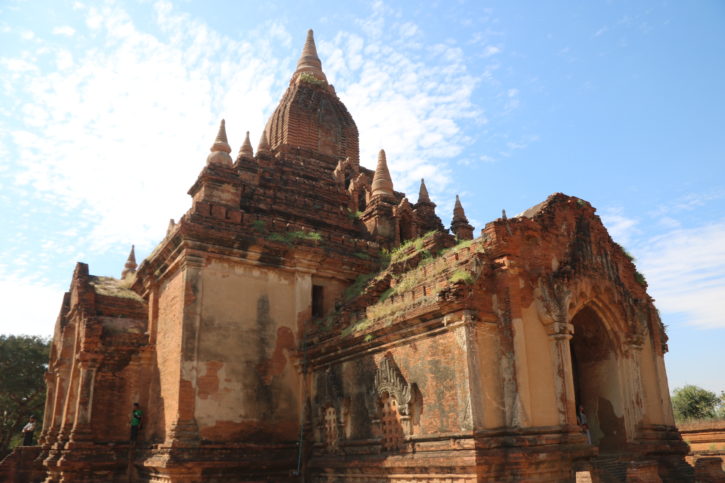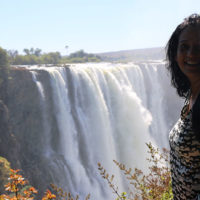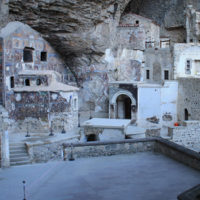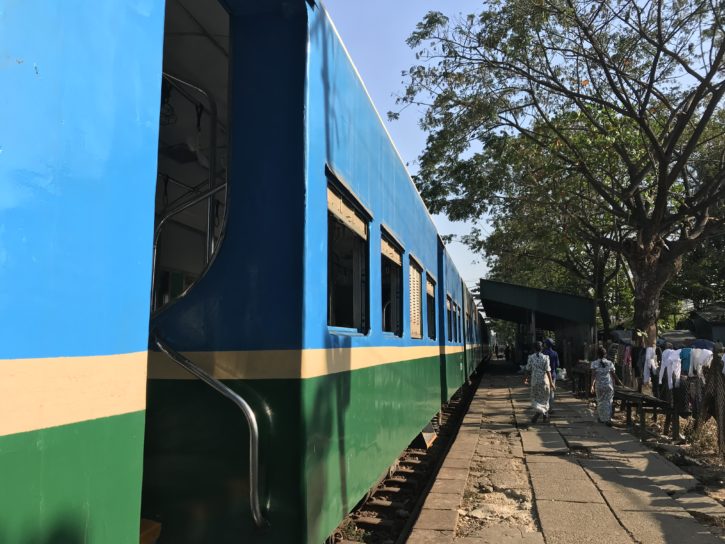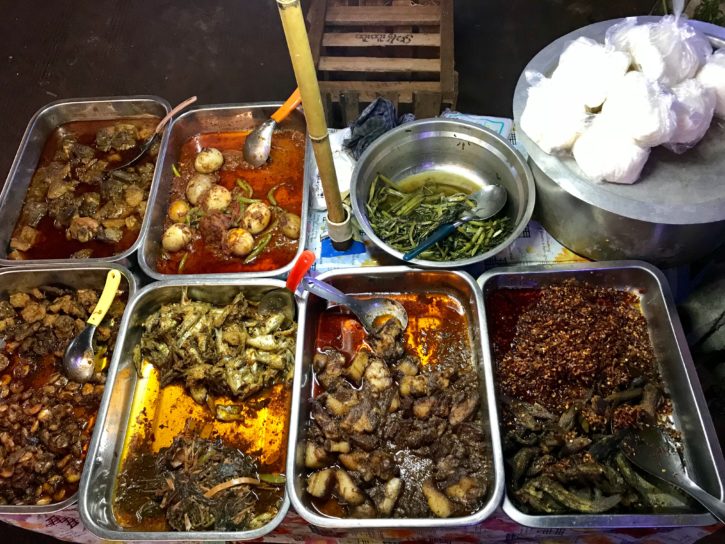Bagan is an example of mysticism and tradition beautifully woven into a grand spectacle without the least dependency on modernization.
Everyone visiting Myanmar (former Burma), eventually finds their way up north – to Bagan. As a matter of fact, Bagan summarizes the very existence of Myanmar, its culture and history. In the present, it is also country’s top tourist destination and holds the key to understanding the evolution of history of painting in Myanmar.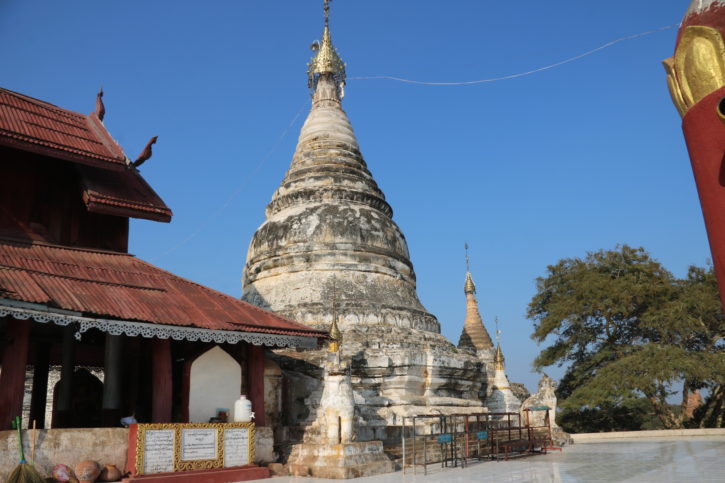
Thus, like thousands of tourists treading the Myanmar soil with vision of mysticism and brooding pagodas in the head, I headed up north in what was the slowest mode of transport – the train from Yangon that covered the distance in 19 hours. In my opinion, train journeys, however long and uncomfortable are essential to destination ahead. This opinion was, in some ways, biased thanks to the 12,000 kyat (USD 7) for a first- class ticket that also included a warm blanket and my chance to witness Myanmar fashion closely.
Burmese women are masters of mixing patterns and colours and wear a lot of layers and the unmissable Thanaka on their faces.
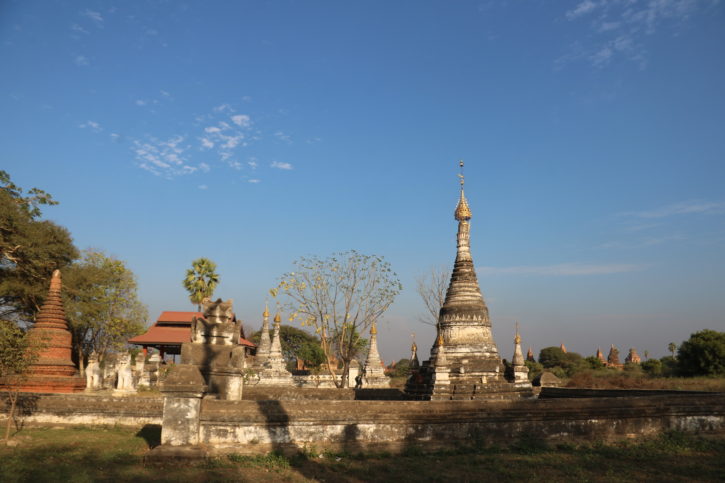
Bagan sits firmly and importantly on Myanmar’s tourist triangle (Yangon -Mandalay-Bagan) and is well connected by other modes of transport, such a comfortable buses and flights, so it is entirely up to you how you want to arrive at the Pagoda Capital of Myanmar.
A sea of Pagodas
Even before the train pulled into Bagan the following noon, I had seen a number of pagodas of many sizes and colour peering out of trees and bushes, making me wonder if the long train journey was worth the trouble at all. But as I alighted at Bagan station, I knew I had made the right decision.
There was something here that screamed for attention. In fact, no photographs I had seen did justice to the real thing. This was Bagan – the ancient capital of Pagan Kingdom which, between the 11th and 13th centuries was at the height of its power and was a thriving cultural and scholastic centre. Religion played a strong role in daily life which lead to the construction of over 10,000 pagodas, of which about 3,000 remain today, all packed within an area of twenty square kilometers.
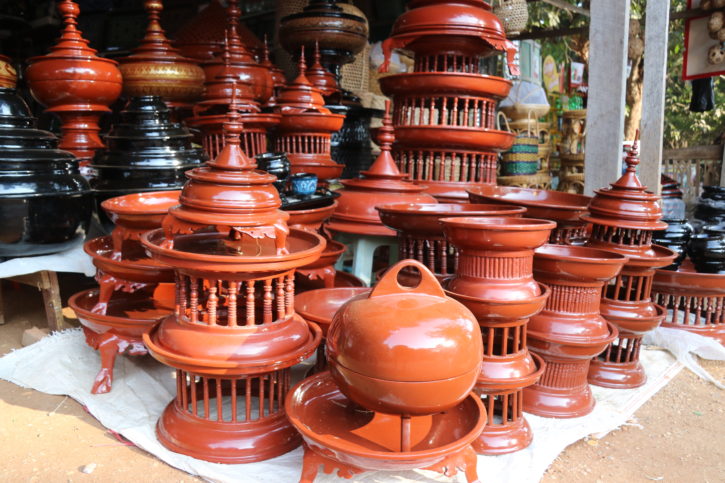
I had a few hours of sunlight and as soon as I checked in, I headed out to explore this sea of pagodas and enjoy the evening in the typical manner of the tourist. The town centre was a hub of activity, but sadly, as a strictly traditional town, there were no chances of any modern entertainment. Here, the very first thing I learnt was about enjoying Bagan on two-wheels and not through its beer and nightlife.
Tip: If you are ever lost, head to the tourist information centre – toilets are clean, wifi is available, English is spoken and free maps provided.
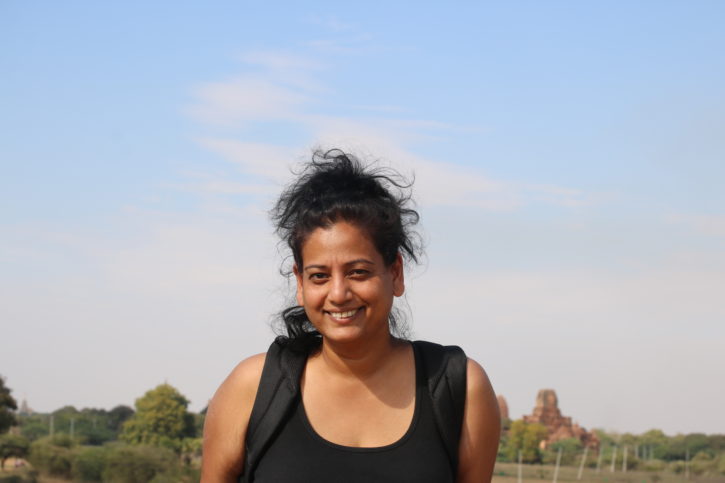 Sunsets are ethereal
Sunsets are ethereal
Evening came rather suddenly, thus ruining my chances of seeing the famed sunset, so instead I opted to walk to the Shwezigon Paya (Pagoda) near Nyaung U and leave exploring for the following day. Shwezigon Pagoda, typical of Burmese stupa consisted of a circular gold-gilded stupa surrounded by smaller temples and shrine was ethereal to say the least, especially because the area surrounding the temple was in complete darkness. I vowed to return the next day to see it in the sunlight.

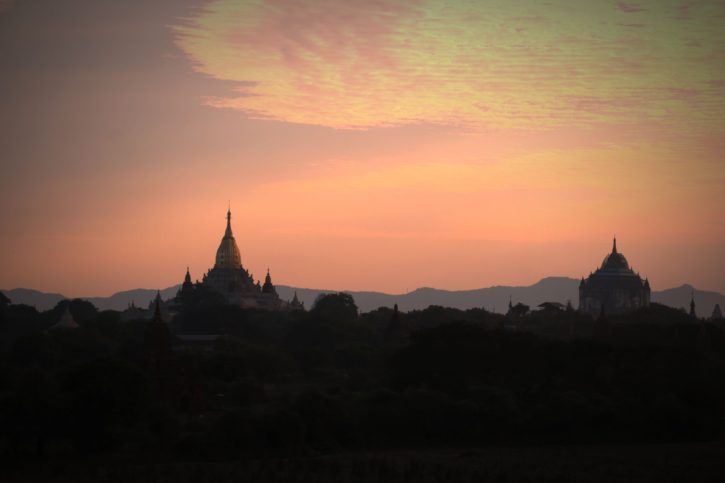
My first morning in Bagan began at 9 am with a bowl of steaming mohinga, Myanmar’s national food, as I waited for my electric bike to be delivered. Since electric bikes were the preferred mode of transport, the other option being horse-cart or bicycle, I quickly conquered my fear and rode out past famous Ananda Temple with its unique umbrella-like structure just before the walled gates of Old Bagan. Ananda Temple, one of the few remaining examples of Mon architecture (fully restored after the 1975 earthquake) required a closer inspection and at the moment I was keen to get a quick overview of the Pagoda Field before charting a more elaborate plan of action.
I had entered a field of pagodas. That’s right. A field. Like a rice field. Or corn. With about 3,000 pagodas, it was a field alright. Pagodas of all shapes and sizes popped out of the dry ground as far as eyes could see. I rode past the Bagan Archeological museum before veering off to the left, following a narrow dirt road that took me further afield. No matter which track I pursued, pagodas remained a constant. Several of the temples were in use and are well maintained, while some are not more than a pile of rubble, but most dot the landscape like something from another world, both insistent and ethereal.
It was a productive morning in the number of pagodas I had seen (and not photographed). The temperatures soared and soon I was “templed out.” Well, let me tell you, three thousand is plenty – I could hardly imagine what it was like to have 10,000 of these packed in such a small area. So after losing myself more than once in the maze, I rode back to my hotel.
Watching the sunrise
I had seen many temples, pagodas and monuments the previous day, but nothing could have prepared me for the view I stood staring, along with a few thousands of tourists and locals at 5am. The sun rose from somewhere below the temples that appeared to be popping out of an ethereal landscape, each more magnificent than the next. Strangely they looked different to the last evening too. It was unlike anything I’d ever seen. It was breathtaking, bewildering, bewitching – like a fairy tale. The eyes could hardly take it all in. The mind was slow to comprehend all the beauty for the sight I stood staring at from atop a pagoda alongside hundreds of sunrise-enthusiasts ready with their camera.
It was mystical. Almost sacred.
There was a haze and as the sun rose higher, the golden rays disappeared into this shroud when someone broke into the reverie with a thoughtless – “the sunsets are grander.”
There were a few hours before I could put the claim of “grand sunsets” to test.
Overhead, those with a few hundred dollars to spare, sailed by in hot air balloons over this landscape, unmindful of anything but the grandeur unfolding below them.
The amazing sunsets
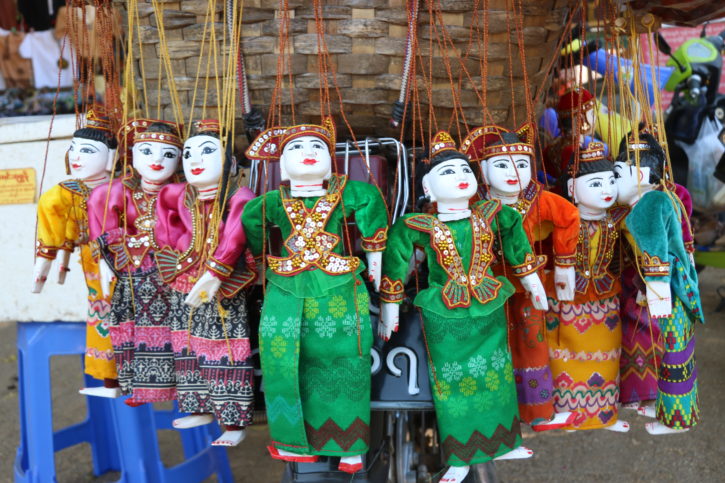
With a smearing of thanaka on my face, arms and neck, and fortified with a bowl of Shan noodles and cane sugar juice, I spent another day exploring till I couldn’t tell one pagoda from the other but I learnt the importance of carrying water, lyongi or a shawl (or long pants if you wish) and the usefulness of sandals, especially if you didn’t want to be turned away from some of the more famous temples. Most of the pagodas or payas had a Buddha statue inside, many were unattended, some crumbling, many locked but still attracted visitors pushing their cameras through the grille for a totally “unseen” photograph.
Some even had carvings and murals, but the darkness made it impossible to appreciate them.
I turned my attention to the artistic side of Bagan to understand the association of marionettes with the culture of Myanmar followed by a visit to the lacquer factory. Marionettes (puppets) can be seen hanging from trees lining the road, clad in vibrant colours – the Queen, the king, alchemist, all vying for attention on a hot summers’ day. The one you see hanging by threads along the streets are mere representations of the real ones – puppet shows are pretty common in Myanmar and have been for centuries. They generally depict a court scene.
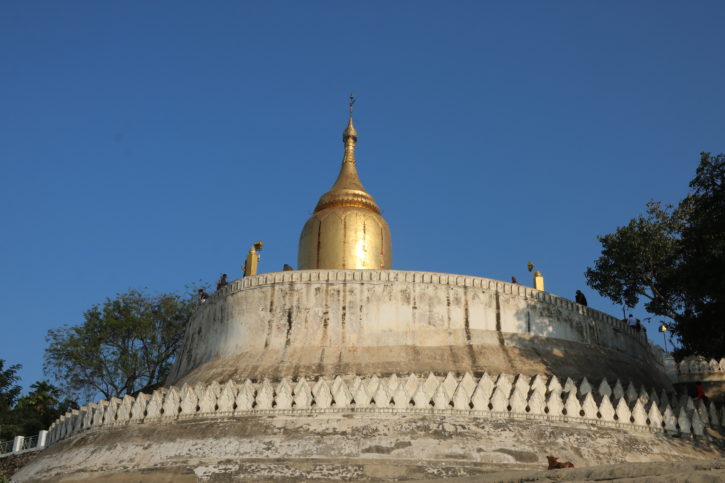
Between lunch of fried noodles and anticipation of sunset, there were two hours in which I surrendered to the delicate hands of the Burmese masseuse, following it up with sips of tea before riding on the now familiar roads towards the jetty.
That is how I came to find the gilded Bupaya Pagoda on the banks of Irrawady River which gave clear view of the sun sinking into the mountains beyond. The gourd-shaped Paya was originally built in 168 AD, destroyed in the earthquake of 1975 and subsequently rebuilt using modern materials with a slight deviation from the original structure.
If you have planned ahead, you can cruise down the river to enjoy this glorious spectacle.
The noise and smell of food emanating from the bustling market worked together to create an atmosphere of sheer magic. As the sun set over the mountains beyond, Irrawady fell silent and devotees returned home…the night had arrived in Bagan, leaving behind a sun set that was as beautiful as advertised.

Bagan, for sure
I spent six days exploring Bagan, from sunrise to sunset, and literally with a smile on my face through the whole experience. Whether I was looking at the sunset over Bagan from the top of a pagoda or a sunrise from a hot air balloon, there was no denying that life changed meaning with every ray of light – whether rising or setting and every grain of sand that flew into your open mouth as you stood staring at the majestic pink, red or white pagoda scattered across an ethereal landscape where time stands still.
While you are here
Take a day trip to Mt Popa. This monastery built on a small mountain is reachable only via 777 steps. Your efforts are rewarded with fantastic views and is considered to be a spiritual experience.
Handy info
- E-bikes are the best way to explore Bagan. Easy to ride and cheap to rent.
- Horse carts are a slower way of exploring Bagan
- Best time to explore is between 7am-10am and post noon between 4pm and sunset.
- For the best sunrise, head out as early as 4.30 to secure a spot on one of the pagodas.
- Visit the Tourist Information Centre for any information or help
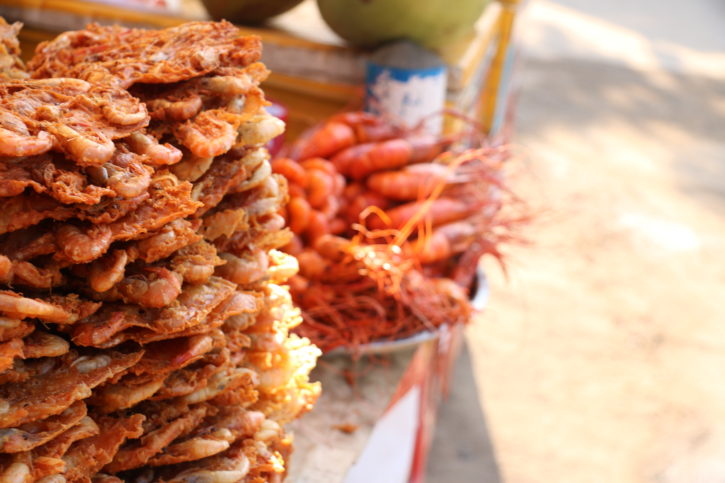
What to eat
Cuisine in Bagan is a mix of Indian, Chinese, and Thai mixed with some of their own. But try these very local fare –
- Mohinga
- Shan noodles
- Freshly grilled fish
Temples not to miss
- Ananda Temple
- Thatbinnyu Temple
- Htilominlo Temple
- Myinkaba Gubyaukgyi Temple
- Shwezigon Pagoda
Fun facts
- Bagan is fondly known as the ‘sea of temples.’
- All temples in Bagan are considered sacred by the Burmese.
- Unlike the rest of the country, Bagan has very little rainfall which makes this an “all-year-round” destination.
- Bagan is a traditional city without a single form of modern entertainment – there are no discos here.

